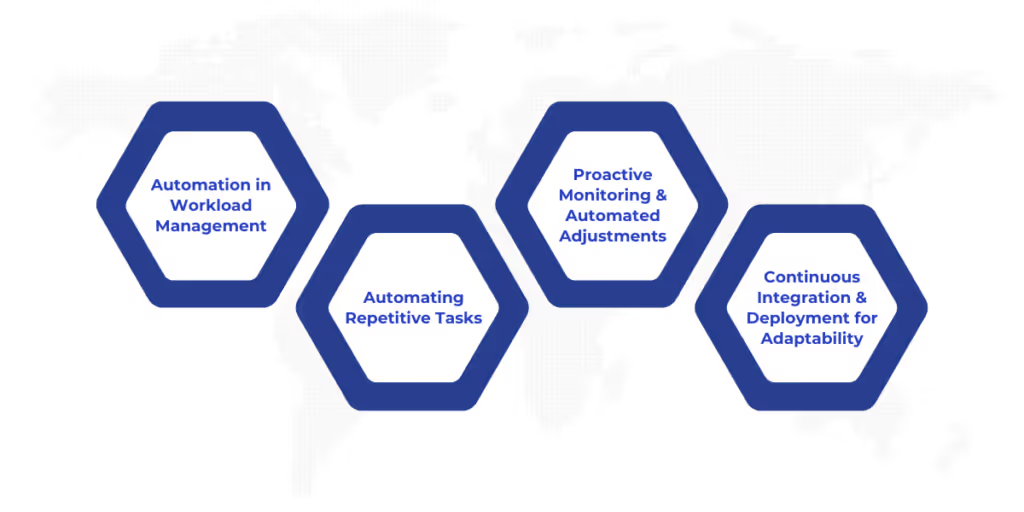

As businesses increasingly rely on complex, distributed systems to deliver products and services, effective Site Reliability Engineering (SRE) practices have become more essential. SRE ensures high availability, performance, and scalability while providing a seamless user experience. However, as workloads evolve due to shifts in customer demand, technological advancements, or changing business priorities, SRE teams must adapt their strategies to manage these dynamic challenges.
Adapting SRE strategies to meet shifting workloads is crucial for maintaining systems that align with organizational needs. This involves revisiting traditional SRE practices - such as incident response, capacity planning, and monitoring - while tailoring them to accommodate variations in workload patterns. By embracing flexibility, automation, and proactive planning, SRE teams can enhance system resilience and performance, even in the face of unpredictable demands and rapidly evolving technologies.
This article explores methods, tools, and best practices for adapting SRE strategies to ensure that organizations remain agile, reliable, and prepared for the future.
As workloads evolve, traditional SRE approaches may struggle to keep pace. Agile methodologies, known for their flexibility and iterative approach, have been integrated into SRE practices, enabling teams to more effectively manage workloads in dynamic environments. Agile in SRE focuses on adaptability, close collaboration, and continuous improvement to maintain reliable and scalable systems amidst fluctuating demands.
Agile in SRE refers to the application of Agile principles and practices to the management of large-scale, complex systems, focusing on reliability, scalability, and maintainability. SREs use Agile methodologies to continuously improve the systems they support while balancing the need for high uptime with the requirement for rapid feature development and deployment. Agile practices in SRE help teams deliver value iteratively and incrementally, fostering collaboration, adaptability, and quick responses to changing demands or incidents.
Agile in SRE involves embracing cross-functional teams, constant feedback loops, automation, and iterative improvement in the processes of managing and maintaining services. The goal is to deliver services that are reliable, secure, and scalable while maintaining the flexibility to adapt to evolving customer needs and technological advances.

Traditional workload management typically relies on manual processes, rigid schedules, and siloed teams, often resulting in inefficiencies and delays. These challenges are particularly evident in modern IT and operations environments, where complexity, scale, and speed of change are constantly increasing. Below are some key challenges faced in traditional workload management:
Also Read: Site Reliability Engineer (SRE): Job Description and Responsibilities
Adopting Agile in SRE offers several advantages:

Automation is a cornerstone of modern SRE practices, helping teams reduce human error and adapt quickly to fluctuating demands. It streamlines processes, ensures consistency, and improves resource management.
Automation enables dynamic workload management without the need for constant manual intervention. Routine tasks—such as scaling systems or managing configurations—can be automated, ensuring speed, accuracy, and reduced error. Automated scaling adjusts resources in real time, mitigating the impact of fluctuating conditions.
Automating repetitive tasks like server provisioning, patch management, and incident triage reduces operational overhead. For instance, automated scaling can address resource fluctuations, while testing frameworks proactively identify issues before they affect production.
Automated monitoring tools provide continuous data on system performance, triggering actions when performance thresholds are reached. For example, when system capacity approaches its limit, automated scaling provisions additional resources, ensuring optimal performance during peak periods.
Automation in Continuous Integration (CI) and Continuous Deployment (CD) pipelines supports the rapid and safe deployment of updates, ensuring SRE teams can manage evolving workloads efficiently. Automated rollback mechanisms allow for swift restoration to a stable state in case of issues.
Also Read: Building Resilient Systems with SRE and Chaos Testing
As organizations grow, scaling SRE operations to accommodate increased workloads is essential for maintaining high availability and performance. Effective scalability ensures systems remain resilient even as demand rises.
Scalability ensures systems can handle increased traffic, data, or transactions without compromising performance. Efficient scaling prevents downtime and optimizes system capacity during periods of growth.
Cloud computing allows for elastic resource management, where resources are automatically scaled based on demand. Services like AWS, Google Cloud, and Azure enable SRE teams to provision additional resources during high-demand periods and scale back afterward, ensuring cost efficiency.
Load balancing distributes workloads across multiple servers, preventing overload and ensuring reliability. When combined with auto-scaling, load balancing ensures continued service availability, even during spikes in traffic.
Microservices architecture allows for independent scaling of system components, optimizing resource usage. By using microservices with orchestration tools like Kubernetes, SRE teams can scale individual services in response to fluctuating workloads.
Effective monitoring and alerting systems are essential for ensuring system resilience in dynamic environments. These tools help SRE teams detect issues early and make data-driven decisions to address shifting workloads.
Continuous monitoring allows teams to track system health, performance, and resource utilization in real time. Early detection of issues, such as unexpected load spikes, enables teams to take proactive actions—like scaling resources—before problems escalate.
Data analysis helps teams forecast resource needs by identifying trends in usage patterns. By analyzing past traffic or performance metrics, teams can predict future demand and provision resources more efficiently, avoiding both over- and under-provisioning.
An effective alerting system notifies teams when predefined thresholds are exceeded, enabling quick responses to prevent service disruption. Alerts can trigger automated actions, such as scaling or rerouting traffic, to address critical issues without delay.
Also Read: DevOps vs. SRE: Differences in Speed and Reliability
Managing dynamic workloads requires collaboration across teams. Close communication helps ensure that SRE teams can quickly adapt to shifting demands, scale systems efficiently, and resolve issues in a timely manner.
A collaborative culture is vital for adaptive workload management. By breaking down silos between development, operations, and business functions, teams can more effectively address workload changes. Cross-functional cooperation fosters shared ownership of system reliability and encourages proactive planning and rapid issue resolution.
Collaboration tools, such as Slack or Microsoft Teams, enable real-time communication and quick problem resolution. Integrating these tools with monitoring systems ensures that teams stay informed about system performance and can act quickly during incidents.
Regular communication between SREs, developers, product managers, and business stakeholders ensures that workload demands are understood and managed effectively. Cross-team meetings, such as daily stand-ups or sprint planning sessions, keep everyone aligned and prepared for shifting demands.
SRE teams must balance proactive responsibilities—like system optimization and monitoring—with reactive tasks, such as incident management. Effective prioritization ensures that teams maintain system reliability without becoming overwhelmed by urgent issues.
Allocating specific times for proactive tasks—like capacity planning—while keeping a "firefighter" mode for incident resolution helps maintain a balance. A rotation schedule ensures that team members are available to handle incidents while still focusing on long-term improvements.
Tools like Agile sprint planning or Kanban boards help teams prioritize tasks based on urgency. Routine tasks can be scheduled, while high-priority incidents are handled promptly. By automating repetitive tasks, SRE teams can free up resources for more critical activities.
Overcommitting team members can lead to burnout and slow response times. By setting clear service-level objectives (SLOs) and service-level agreements (SLAs), teams can manage expectations effectively. Resource management tools help track workloads and ensure teams are not overloaded.
As workloads continue to evolve and grow in complexity, adapting SRE practices becomes crucial for ensuring that systems remain resilient, performant, and scalable. The key strategies for adapting SRE to changing workloads revolve around proactive planning, real-time monitoring, agile response mechanisms, and effective collaboration among cross-functional teams.
By adopting flexible, proactive, and data-driven SRE methodologies, teams can effectively manage changing workloads, reduce operational risks, and create resilient systems that can thrive in an ever-evolving technological environment.
Ready to Optimize Your SRE Practices?
Adapt your Site Reliability Engineering strategies to evolving workloads with the latest tools, automation, and agile methodologies. Contact WaferWire to learn how we can help you scale your systems with efficiency and reliability, ensuring high performance no matter the demand. Let’s build resilient systems together!

